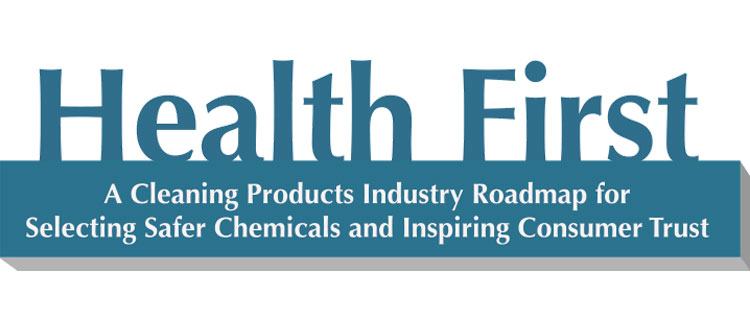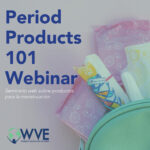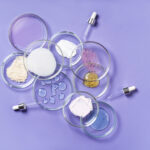Defining “Safe”: 5 Things the Health First Roadmap Means for You
 |
| Sarada Tangirala Director of Corporate Accountability |
Women are increasingly looking for safer cleaning products, and if you’re reading this, I’ll bet you are one of them.
So what is your definition of “safe” when it comes to your health, your family, your pets, and the environment? And how do you know whether the company whose products you’re buying shares that definition? Recently, we released Health First: A Cleaning Products Industry Roadmap for Selecting Safer Chemicals and Inspiring Consumer Trust to address these questions.
When we talk with cleaning product companies, it’s clear each company has their own version of what “safe” or what “toxic” means. This inconsistency and confusion is hurting both companies, and most importantly, our health. The Health First Roadmap offers a common language for industry, advocates, and consumers. But more importantly, it lays out a path for companies to improve how they evaluate and select chemicals.
Judging companies by what they do, not what they claim
All companies claim their products are safe. Some simply ask you to trust their word, while others provide a bit more information, such as some of the chemicals they don’t use. Ultimately, we are concerned about how a company makes sure all their cleaning products are safer, and this requires a commitment and a process that go far beyond marketing claims.
Here are some things to keep in mind when deciding whether a company is putting your health first:
- Getting to safer products starts with setting goals
If the company wants to reduce or eliminate hazardous chemicals, they should be clear about what this means. When a company talks about their commitment to reducing greenhouse gas emissions, for example, they include a goal to reduce GHGs by some percent within a certain number of years. This is unfortunately not the case for reducing hazardous chemicals used in making products. Company claims of product safety ring hollow when they don’t come with ingredient safety goals.
- Measuring your chemical footprint can help you set and meet goals
Knowing how many hazardous chemicals a company uses, and how much of those chemicals are in products, is an excellent way to start. With this information, companies can figure out which chemicals they want to eliminate over time. The Chemical Footprint Project is a tool trusted by environmental health advocates, and it’s the one we are recommending in the Health First Roadmap.
- Chemicals we know are bad vs. chemicals we don’t know much about
Where chemicals have been banned or restricted by governments the world over, or where they have been placed on watch lists by research institutions, these tend to be the chemicals we already know are hazardous to human health and/or the environment. For other chemicals, research is starting to show that there are emerging chemicals of concern. But for the vast majority of chemicals used in cleaning products, there has not been much research done—or there has been none at all—that is available to the public. Companies that only take action on chemicals that are the worst of the worst are simply not doing enough to protect our health.
- Listening to consumers and health advocates
Many companies do their own assessments on chemicals, though these rarely if ever make it into the public domain. This means the health outcomes or amounts of exposure that are of most concern to YOU may not be taken into account. Companies that actually listen to the concerns of consumers and advocates demonstrate that they are not operating in a black box.
- Deciding how much risk of exposure to a harmful chemical is ok
We might sound like a broken record, that any amount of exposure to a toxic chemical is unacceptable. Most companies disagree with this, and believe that for many hazardous chemicals, they can figure out a small enough “dose” where your health is not at risk. But if this is the case, consumers have a right to know what level of risk a company has decided was ok. Did they take into account the exposures and sensitivities faced by cleaning workers, pregnant women, and others?
What you can do to make sure companies put our health first
Women have the power to change entire industries for the better. The Health First Roadmap provides a pathway companies can use to improve how they protect the public from harmful chemicals. However, many of them will be reluctant to do so unless they hear from you. Stay tuned for more on how you can raise your voice!







Safe to me means companies are putting my health first! Safe to me means companies are considering how the ingredients in their products might be interaction with other chemicals we are exposed to in the environment. Safe to me means I don’t have to worry that a product I buy might contain a “little bit of cancer” or a “little bit of endocrine disruptor” — I am not interested in products that are not taking a precautionary approach or not taking note that low doses matter too.
Safe to me means ingredients in the product won’t harm the health of my family members. It’s shocking to me that companies are not already doing this! I also think the people who are buying these products, or considering buying them, have the right to know how companies are making the decision that something is “safe.” How can we trust them if they won’t tell us how they are evaluating ingredients for safety? I don’t the buy the “trust us it’s safe” argument. Health first!
Thank you for a well thought out article, and for asking important question.
There are organizations and companies who claim essential oils and products made with essential oils are “safe”, that there is no “known” harm from these, yet they delete any comments from people who describe personal experiences of harm, or share scientific research that does show harm.
And then they have the gall to actually claim that they are on our side while they promote things that harm us.
When upwards of hundreds of people (in groups of people with chemical sensitivities and allergies) suffer serious adverse effects (some life threatening) from EOs (even the “pure” or organic ones), effects that prevent them from accessing food, health care, friends, family, jobs, etc, then it makes sense to stop claiming they are safe and not “known” to cause harm.
EOs (like other fragrances) should not be used or added to products that subject the public to them or their “therapeutic” effects.
Since when is it ok to subject other people to your medicine? Since when is it ok to take medical advice from people and companies who sell the products instead of from qualified health care practitioners who study the subject and effects for years, and then give personal advice to people on which therapies will be appropriate for them?
Fragrance-free policies are becoming more and more necessary as methods of harm reduction just like smoke-free policies. EOs (and EO saturated people) are not appropriate in places with fragrance-free policies.
Using or diffusing EOs in “health” food stores or alternative medical environments also prevents access to food and health care for the growing numbers of people being harmed by these substances. They have become accessibility barriers for people with disabilities.
Essential oils are NOT benign or safe to use the way they are being used and promoted these days. Plus, the environmental destruction is becoming immense. Any benefits they have had are about to be completely lost unless their use is seriously curtailed.
Those of us who 1st started warning you all about regular fragranced (and other toxic) products and materials being harmful are now alerting you all to the fact that EOs (even the ‘pure’ or organic ones) are also causing harm, and that they should not be added to everyday products and materials or used in any ways that would subject other people to them (think of how smoke travels and sticks to things) if you wish to use them medicinally yourself.
To me, a company that is putting my health first is taking the harder road in choosing what ingredients to use in their products- and even in what products they choose to sell. I don’t want companies to use ingredients known to be toxic but which “probably” won’t harm me at the levels used in their product. I don’t want or need any excess risk however small it is claimed to be. I want to buy from companies that do the hard work of finding safer alternatives instead.
‘Safe’ to me means the product contains no ingredients that are damaging to me but, more importantly, that it is safe for the environment and all life forms it touches from the time it’s sourced to when it hits the store shelf.
Safe means the product ingredients are fragrance-free and as natural as possible. I don’t want a product that is not “environmentally friendly”. There should not be a chemical masking the fragrance. Body products should be safe for babies through elderly. The known ingredients that are considered carcinogens should NOT be allowed in products in the U.S. It’s shameful that products are changed for sales in Europe, but the U.S. version contains what is banned in Europe.
I have a typo in my posting. I left out the word “not” in “The known ingredients that are considered carcinogens should NOT be allowed in products in the U.S.